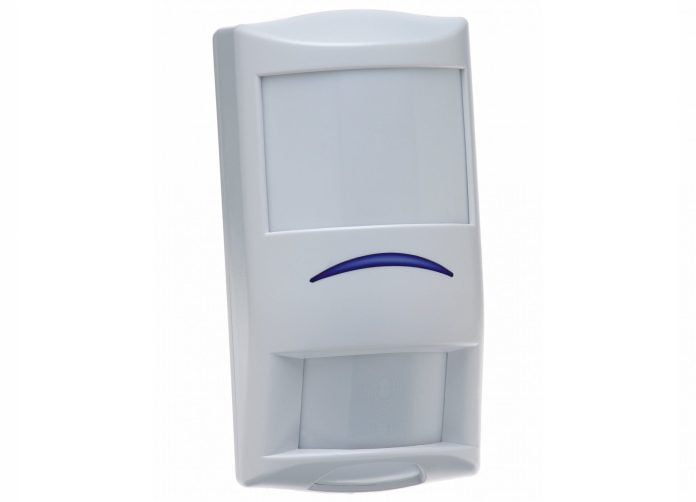Q: Are dual edge PIR sensors better than quad element PIR sensors and what’s the difference?
A: Dual edge sensors shouldn’t be confused with twin pyro element units. That said, dual edge sensors divide each of their zones into 2 sections, a positive half and a negative half, or edge. All PIRs monitor the progress of an absorbed IRE signal moving across active and passive sensing zones.
But it’s more complicated than that with dual edge units. These also divide the active zone into a positive side and a negative side and then monitor IRE signals passing from the positive edge to the negative edge (or from negative to positive) in a set amount of time measured as metres per second.
Some duals use sequential path tracking to check for infrared disturbances and they follow the progress of these movements through each zone. Sequential zone tracking means false alarms are not generated by stationary infrared disturbances such as bright sunlight on a window. There’s also reduced chance of false alarms caused by moving sources of IRE going from one part of a zone to another.
The quad principle of detection aims to reduce the chance of false alarm caused by pets or small animals by clever design and without using tune out processing. Combining quad element and advanced signal processing should mean an even better sensor. Quads break each zone into 4 separate parts – imagine them as 4 boxes forming a square but remaining distinct from each other. Each of the elements has a different value. The 2 upper boxes are designated A+ and A- while the lower two boxes are B+ and B-.
Quads monitor these to see if they are being filled by the IRE signal of an intruder. It works like this. Each A box is matched negative and positive and it’s the same with the B boxes. As the processor monitors each of the 4 elements in a zone, it considers the IRE level. When this breaks a certain threshold, the processor starts to calculate an equation over and over. This equation is [A+B] – [A-B] = 0. So long as the sum of this calculation = 0, no alarm is activated.
Say a rat or mouse moves in the target area and its signal fills just 1 of the 4 zone elements with an IRE signal having a value of 2uJ. The processor computes this as [0+2] – [0-2] = [+2] – [-2] = 0 and there’s no alarm signal generated. But if an intruder with a value of 10uJ disturbs 2 elements then the processor calculates [10+10] – [10-10] = 20 – [0] = 20 – 0 = 20. As 10 is the alarm threshold a value of 20 means alarm activation.
In the field the quad is constantly running computations which essentially represent questions like “Was there a disturbance in any of the 4 elements? What was its value? Is it still there? Has it moved?”
#sen.news #SEN #SENnews #security #electronics









